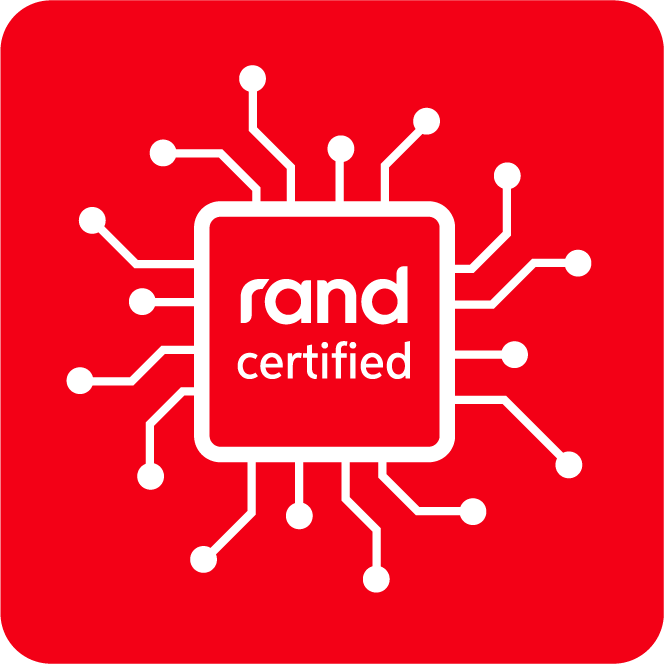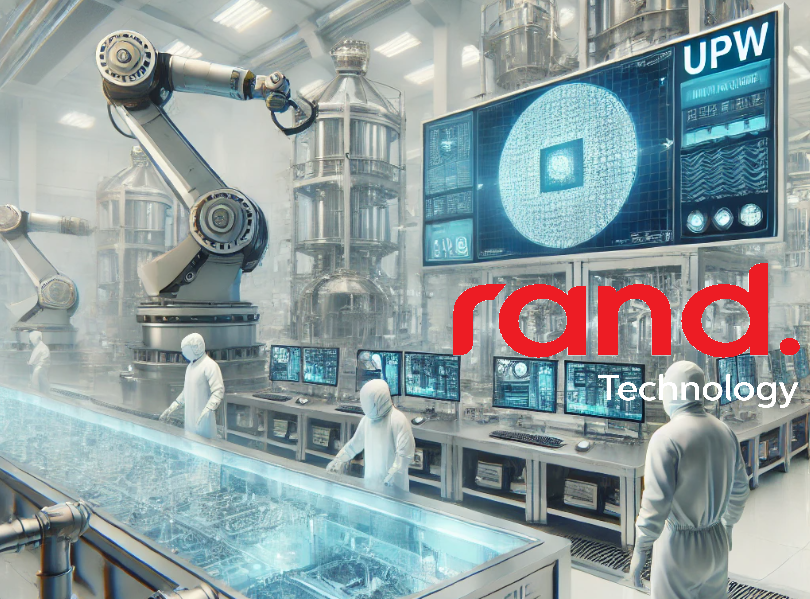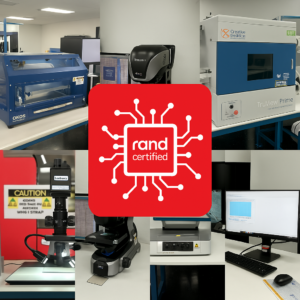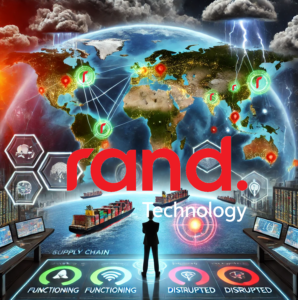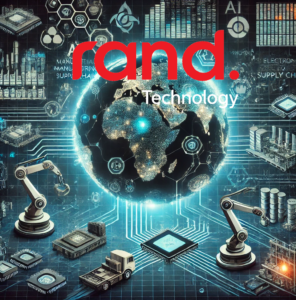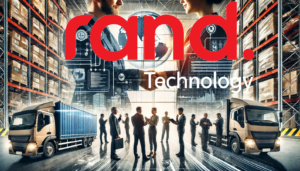At Rand Technology, we believe sustainability is more than an aspiration—it’s a responsibility. As a global leader in electronic component sourcing and supply chain solutions, we recognize our crucial role in ensuring ethical sourcing, reducing environmental impact, and promoting a circular economy for semiconductors.
The semiconductor industry powers the world’s most essential technologies, but its environmental footprint and supply chain complexities pose significant challenges. These issues require actionable solutions, from high energy consumption and resource depletion to ethical sourcing of raw materials. This article explores the sustainability concerns within semiconductor production, how Rand Technology addresses them, and the opportunities we see for creating a greener, more resilient supply chain.
The Environmental Impact of Semiconductor Manufacturing
1. High Energy Consumption
Semiconductor manufacturing is among the most energy-intensive industries, with fabrication plants (fabs) consuming vast amounts of electricity. Many of these facilities still rely on fossil fuels, exacerbating carbon emissions.
How Rand Helps: We work with customers to optimize their supply chains, reducing dependency on inefficient sourcing and finding alternatives that prioritize lower carbon footprints. By leveraging our network, we can identify suppliers committed to renewable energy and energy-efficient manufacturing processes.
2. Water Usage and Contamination
The semiconductor industry uses ultrapure water (UPW) for wafer cleaning and chemical processes. This intensive water use contributes to depletion concerns, particularly in water-scarce regions.
How Rand Helps: We partner with manufacturers that implement advanced water recycling and treatment systems through responsible sourcing strategies. Our commitment to sustainability extends to recommending suppliers who actively work to reduce their water consumption footprint.
3. Hazardous Chemical Waste
The fabrication of semiconductors requires an extensive list of hazardous chemicals, including solvents and gases, that can contribute to environmental pollution.
How Rand Helps: We prioritize working with vendors that adhere to stringent environmental standards for chemical disposal and waste reduction. Rand also advocates for green chemistry innovations that reduce dependency on harmful substances in the manufacturing process.
4. E-Waste and the Lifecycle Problem
The rapid advancement of technology has led to an overwhelming volume of electronic waste. Many semiconductor components become obsolete within years, resulting in excessive landfill waste and improper recycling methods that expose workers and communities to toxic materials.
How Rand Helps: We play an active role in the circular economy by helping companies extend the lifecycle of semiconductor components through refurbishment, repurposing, and responsible asset disposition. Our expertise in IT asset disposition (ITAD) ensures that end-of-life components are recycled in compliance with environmental regulations, mitigating waste and promoting material recovery.
Challenges in Achieving Sustainability in the Semiconductor Industry
1. Supply Chain Complexity
The supply chain is incredibly intricate, spanning multiple continents and involving countless stakeholders.
How Rand Helps: We simplify and streamline sourcing by leveraging our global network and market intelligence. Our extensive partnerships allow us to provide ethical and sustainable sourcing solutions that reduce supply chain inefficiencies and lower carbon footprints.
2. The Cost of Green Manufacturing
Adopting sustainable practices often comes with an initial financial burden, which discourages some companies from making the switch.
How Rand Helps: Our market expertise enables us to identify cost-effective sustainability initiatives for our clients. By sourcing components strategically, we help businesses find environmentally friendly alternatives without compromising profitability.
3. Regulatory Disparities
Different regions enforce varying levels of environmental and ethical sourcing regulations, leading to inconsistencies in sustainable practices across the industry.
How Rand Helps: With decades of experience navigating complex global trade regulations, we help our clients comply with the most stringent environmental and ethical sourcing standards, ensuring they remain ahead of shifting regulatory landscapes.
4. Raw Material Sourcing and Ethical Concerns
Semiconductors rely on rare and conflict-prone materials such as cobalt and palladium, raising concerns about ethical mining practices.
How Rand Helps: We actively source from suppliers that uphold responsible mining practices and ethical labor standards. Our commitment to supply chain transparency ensures that our clients receive components sourced with integrity.
Opportunities for a Sustainable Future in Semiconductors
1. Transitioning to Renewable Energy
Companies in the semiconductor industry are increasingly shifting towards renewable energy to power their operations.
How Rand Helps: We identify and collaborate with manufacturers who integrate renewables into their production facilities, helping clients prioritize sustainability in their sourcing decisions.
2. Water Recycling and Conservation
Semiconductor fabs can implement advanced water recycling systems to address water consumption concerns.
How Rand Helps: We work with manufacturers who actively invest in water conservation technologies and ensure our partners align with these sustainable practices.
3. Sustainable Material Sourcing
Sourcing raw materials ethically and responsibly is crucial for long-term sustainability.
How Rand Helps: We integrate blockchain and traceability tools to verify ethical sourcing and promote the use of recycled materials wherever feasible.
4. Circular Economy and Semiconductor Recycling
Adopting a circular economy approach helps extend the life of semiconductor components and minimize waste.
How Rand Helps: We facilitate component harvesting and redistribution, allowing companies to repurpose existing components rather than relying on new production. This not only reduces e-waste but also helps businesses optimize costs.
5. Green Chemistry Innovations
Advancements in green chemistry can lead to the development of safer and more sustainable manufacturing processes.
How Rand Helps: We advocate for research into alternative chemicals and production methods that reduce environmental impact and ensure our partners adopt these best practices.
6. Industry-Wide Sustainability Standards
A unified effort to develop global sustainability standards would encourage the widespread adoption of greener practices.
How Rand Helps: Rand Technology actively participates in industry-wide discussions, supporting regulatory efforts and sustainability initiatives to drive meaningful change.
Conclusion
Sustainability in the semiconductor industry is not just an emerging trend—it is a necessity for the long-term success of technology-driven businesses. As supply chains face increasing scrutiny over their environmental impact, companies must proactively adopt greener practices.
At Rand Technology, we are committed to driving sustainable sourcing and helping our partners make responsible choices. By leveraging our expertise, market insights, and global network, we empower businesses to embrace sustainability without compromising efficiency or profitability.
The challenges are real, but so are the opportunities. The future of semiconductors depends on collective action, and at Rand, we’re proud to lead the charge in building a more sustainable and ethical supply chain for the technology industry.
Let’s build a greener future together.






